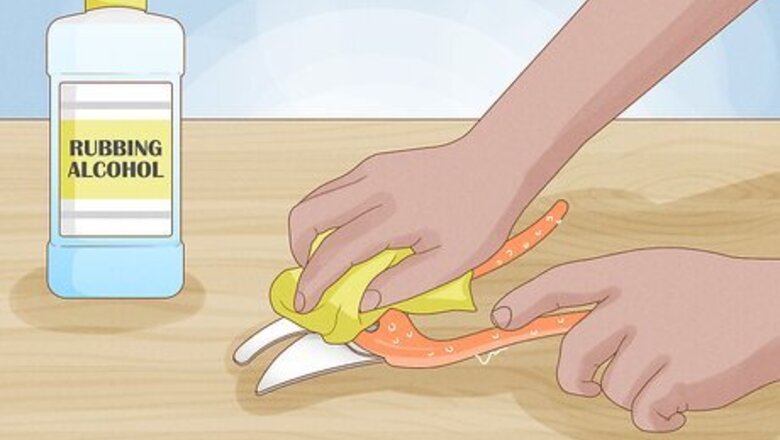
views
How to Prune Plants

Clean and sterilize your pruning equipment with rubbing alcohol. Clean the surface of your pruning equipment with warm, soapy water. Then, soak a clean cloth in 70% concentration isopropyl alcohol and carefully rub down the blades of your pruning shears. If you plan on pruning multiple houseplants, sanitize your shears before switching to a new plant. If you’re pruning plants with woody stems that are between ⁄4 to ⁄4 in (0.64 to 1.91 cm) thick, use lopping shears instead. Use a pruning saw for branches thicker than ⁄4 in (1.9 cm). Larger pruning tools (like loppers) might be easier to disinfect with a diluted bleach solution (with water and bleach mixed at a 9:1 ratio).
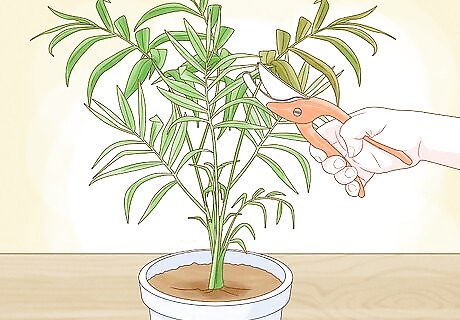
Remove any dead or dying leaves you see. Inspect each plant: do all the leaves and vegetation look healthy, or do some seem to be dying or dormant? Pull off any dying plant material, or use your pruning equipment to do so. What if only part of the leaf is dying? Trim the dying portions from otherwise healthy leaves using a sanitized pair of scissors rather than pruning the entire leaf. Plant specialist Andi Xoch agrees that “most plants benefit from pruning,” and that “most of the time you want to do it when the leaf is turning yellow.”
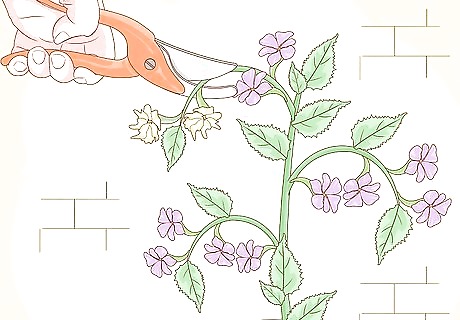
Remove dead flowers from any flowering plants. Using your pointer finger and thumb, pinch off (or “deadhead”) any flowers that look wilted and past their prime, which forces the plant to focus more on its healthy blossoms. If the plant has a strong stem, snip off the entire flower and upper portion of the stem with pruning equipment, pausing above the next flower bud down. Check on your plants regularly (or even daily) to see if they need to be deadheaded.
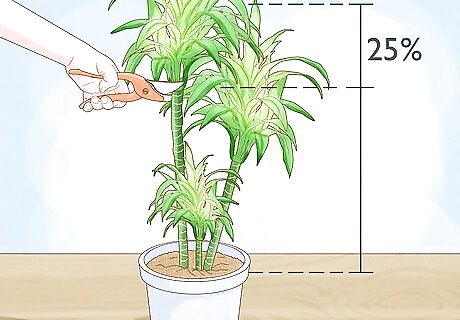
Cut away up to 25% of your stems, vines, or branches. Prune back areas that are looking a bit overgrown, or that you’d like to see some future growth in. To do this, angle your pruning shears above the stem’s node (the bump on the side) by ½ inch (1 cm). Keep in mind that pruned plants generate 2 new shoots from a trimmed spot, which is helpful to consider when you’re trying to nurture new growth. Woody trees: Use pruning shears or loppers to cut 1 cm above a node. Don’t worry about cutting at an angle unless your plant could be exposed to rainfall. Viney plants: Prune the plant back to a robust section of wood (if it’s sick/damaged), or trim it to a branch or bud. Did you know? American landscaping standards require landscapers to remove no more than 25% of a tree or shrub throughout the growing season. Even if you don’t have a woody houseplant, this guideline is helpful to keep in mind.
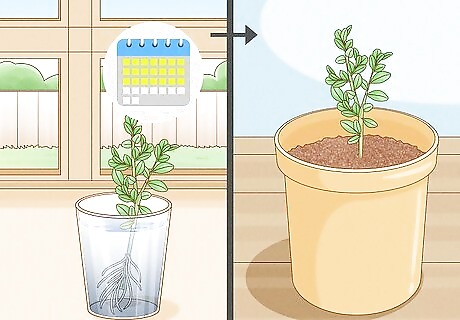
Propagate leftover leafy cuttings to create new plants. Stick your leafy cutting (e.g., pothos, umbrella plant, philodendron, etc.) in a glass of water for about 3 weeks, or until visible roots are growing from the bottom and are about the same length as the plant cutting. Then, transplant the cutting into some soil. Dump out and replace the water if it starts looking dirty. Check that the bottom-most node (or more) is always submerged in the water.
When to Prune

Maintain your plants regularly and prune them seasonally. Houseplants don’t all have a cut-and-dry time when they should be pruned—it really depends on the growing season. Many plants should be pruned in spring, while others can be pruned in later months. Beyond seasonal pruning, it’s important to check in on your houseplants throughout the week and make sure the plant looks healthy and happy (e.g., no yellowing or dying leaves).
Pruning Best Practices
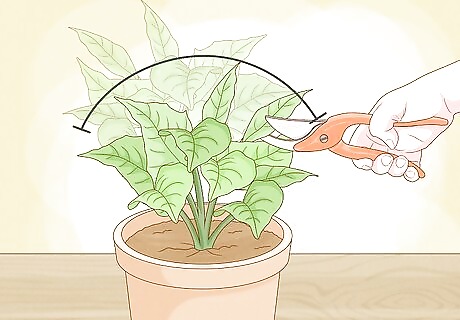
Shape your plants intentionally as you prune. Try to imagine how your plants will grow before you trim off any stems or branches. When you trim around ½ in (1 cm) above the node, you have the opportunity to grow your plant in a new direction. Plants typically generate two off-shoots after being pruned, which is helpful to keep in mind as you envision the future shape of your houseplant. Gardener Steve Masley explains how “pruning controls the growth [of plants] of forces side shoots to develop. For example, if you pinch out the top of [a] basil plant, it creates a shorter, bushier plant that doesn’t get as tall and floppy.”

Sponge off any dust from your plant’s leaves. Like any other stationary item in your home, plant leaves can collect dust, which can actually interfere with photosynthesis. While you’re pruning your plants, give any dusty leaves a quick wipe-down using a slightly moist sponge.
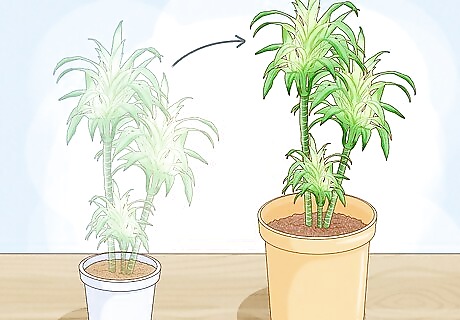
Repot plants that are too big for their pots. If your plant looks healthy but cramped, plan to put it in a pot that’s 1 in (2.5 cm) wider than its old home. Fill the bottom and inner walls of the pot with 1 in (2.5 cm) of fresh soil, and center the plant in its new home. Make sure there’s at last 1 to 2 in (2.5 to 5.1 cm) of space between the surface of the soil and the pot rim (for watering purposes). Alternative: Root-prune the plant rather than repotting it. Root-pruning involves removing the existing plant from its pot, scraping away the extra soil from the roots, and snipping away the outer portions of the root ball (up to 33%). Then, plant it back in its original pot.













Comments
0 comment